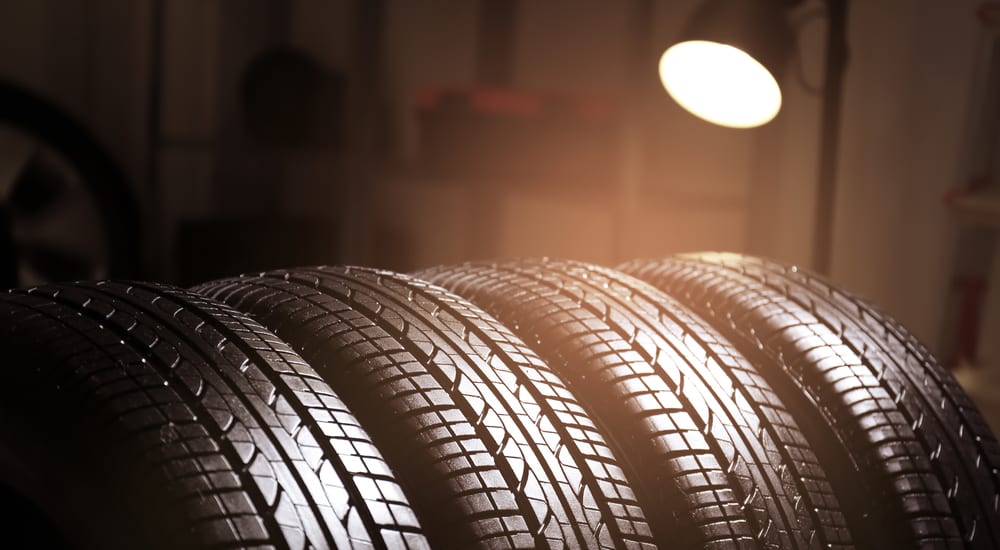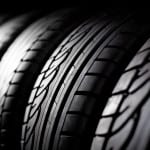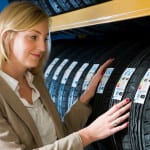As autumn begins, it’s the time of year to start thinking about winter and make sure your car or truck is ready to get you through cold weather until the sun shines on long summer days again. One of the most important things you can do is make sure the tires on your car are in great shape, and if they’re not then you should replace them now, before the weather becomes bad. For most of us, that means heading to a tire shop and getting some new tires put on to keep us running smoothly.
Spending time waiting for new tires or a rotation might not be the most enjoyable way to spend a Saturday afternoon, but it’s important. Just as important as knowing what to look for and ask about when you’re there, to make sure you get just the right tires and service for your vehicle. Keep these things in mind when you head to your local tire shop, and even if you prefer to go to a big box store to buy your tires separately.
Know the Age of Your Tires
The more you know about your tires before you head to a tire shop, the easier it can be to talk about what you need with a mechanic or other professional and make sure your car is treated right. Just like anything else in life, knowledge is power and information lets you communicate what you need and understand what you are told. With that in mind, you should know how old your tires are so that you can make sure you remember to go in to get your tires checked or changed for new ones.
You can see when your tires were made by checking a number located on the tire itself. This is a series of four numbers that follow the letters “DOT,” and indicate the week and year that the tires were actually made. If you see the numbers “DOT4213,” then that means the tire was made in the forty-second week of the year 2013. Tires should be replaced about every six years, even if they are in otherwise decent shape, simply due to how rubber deteriorates and the effects of use and stress on the tires over time.
Check Your Tire Pressure Regularly
Most new vehicles have a Tire Pressure Monitoring System, or TPMS, that automatically monitors the pressure in your tires and will indicate when the pressure is getting low. While this is certainly a useful feature, most TPMS warnings only come on when the tire pressure reaches a point of under-inflation of about 25% or more. That means your tires have to become far too low in pressure before you ever see a warning light come on.
Check your tire pressure yourself, about once a month, so that you can keep them full enough. Proper tire pressure can keep you out of the tire shop by improving the life of your tires and give you better traction and handling on the road, especially in poor weather. You can check your tire pressure with small, hand-held gauges that are inexpensive, and fill up your tires as needed at most gas stations for only a few dollars.
Watch for Wear and Tear
Other than the six-year lifespan that most tires should be assumed to have, knowing when to head to a tire shop for new tires really comes down to keeping an eye on your tires and watching for wear and tear. It is much easier to keep up with routine maintenance and inspections of your vehicle than to handle a sudden blowout on the highway. Regularly look at your tires and check for any visible damage or foreign objects in them. You could have a nail or other item stuck in your tire that doesn’t cause immediate problems but can create a hazard in the future.
The “penny test” is one of the easiest ways to check the tread of your tires for wear and tear and find out if it’s time to head to the tire shop. Stick a penny, with Lincoln’s head facing down, into the tread of your tires in several locations. If your tread is still deep enough, you should not be able to see the forehead and top of Lincoln’s head on the penny. If you can see the top of his head, then your tread is wearing down and it is time to get your tires replaced.
Choosing the Right Tire Size
Even though you might be able to rely on your mechanic or other professional at a tire shop to know what size tires you should have, this is something that is good to know yourself. Don’t look at the tires you already have on your car to see what size they are, since it’s possible you actually have the wrong size already. Instead, look in the owner’s manual for your vehicle, or check the sticker in your car door jamb for the correct tire size for your car.
The size of tires is usually indicated as a series of letters and numbers, such as “P235/75R15” or “205/55R16.” Once you know the proper tire size for your vehicle, look at the tires you currently have to make sure you’ve been riding on the right tires all along. The size can be found on the sidewalls of a tire, and you should use this information when purchasing new tires and communicating with your mechanic.
The Warranty is Not That Important
Warranties when it comes to cars and trucks, and their parts, can be a complicated matter. When it comes to tires, however, warranties are often not as impressive as they might first appear. In general, tire warranties are really just prorated credit for replacement tires if your tires do not last as long as the warranty indicates. In order to qualify for this credit, you often need to prove that your tires were properly cared for and your vehicle was kept in good condition during the entire period of the warranty.
Special Terms and Tire Descriptions
Tire shops and mechanics often have professional jargon they use, and tires are frequently labeled with descriptions like “high performance,” and understanding all these terms can be very helpful. In general, the performance of tires is usually gauged by how well the tires work at high speeds, rather than with regard to how long they’ll last. This means that “ultra high-performance” tires are typically unnecessary for most drivers. Instead, look for “all-season” and talk to your mechanic about your choice and your best options. Now that you understand how to check when tires were made and know the size you need, you’re ready to make informed decisions.
Consider a Wheel Alignment
While you are getting new tires put onto your vehicle, it’s a good time to ask about a wheel alignment. This is usually a quick process that can be done easily while your car is already lifted up at your local tire shop. A wheel alignment can improve the comfort of your ride, make your car easier to control, and is typically inexpensive. If you’re only getting new tires put onto your car every six years or so, then getting your alignment done too, if you haven’t had it done recently, is a good idea.




